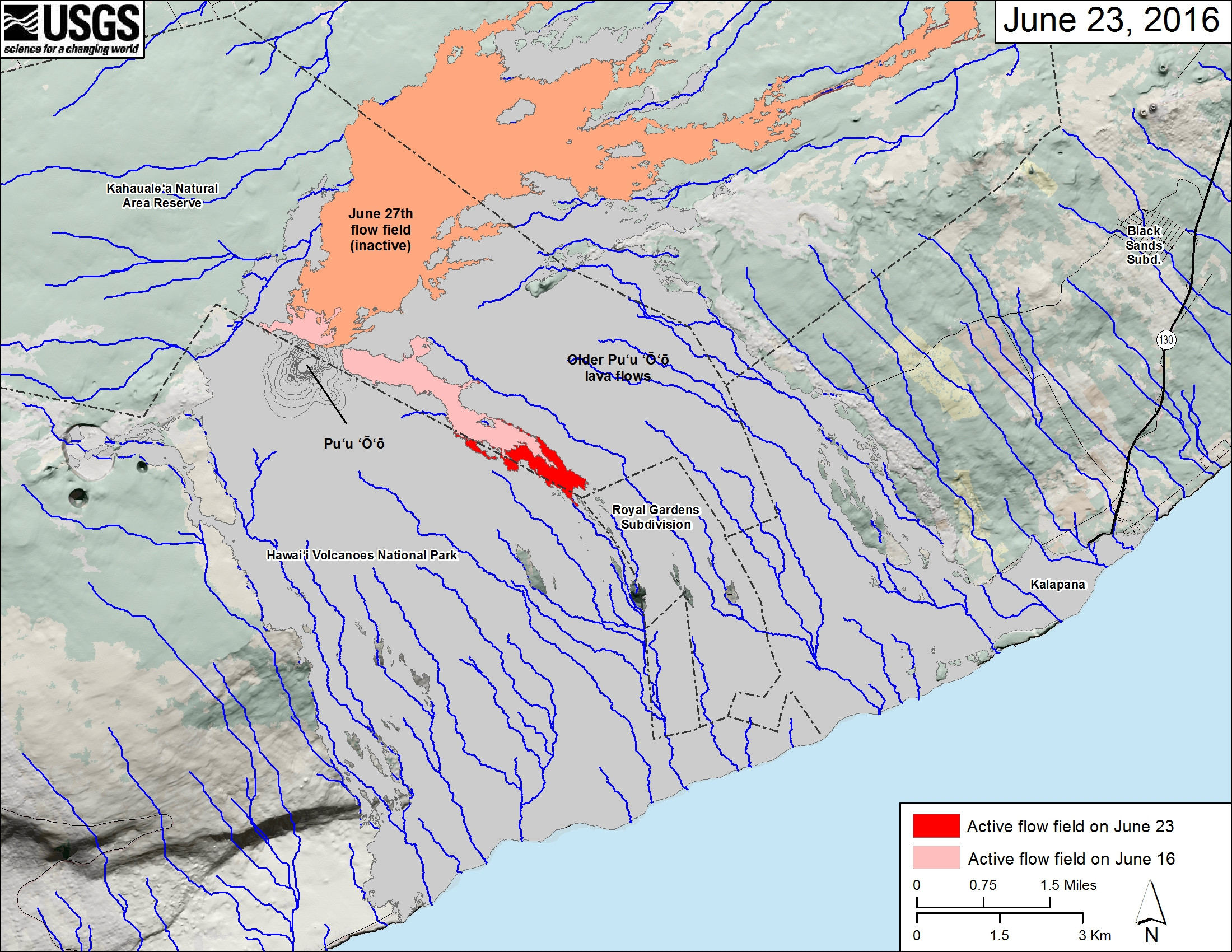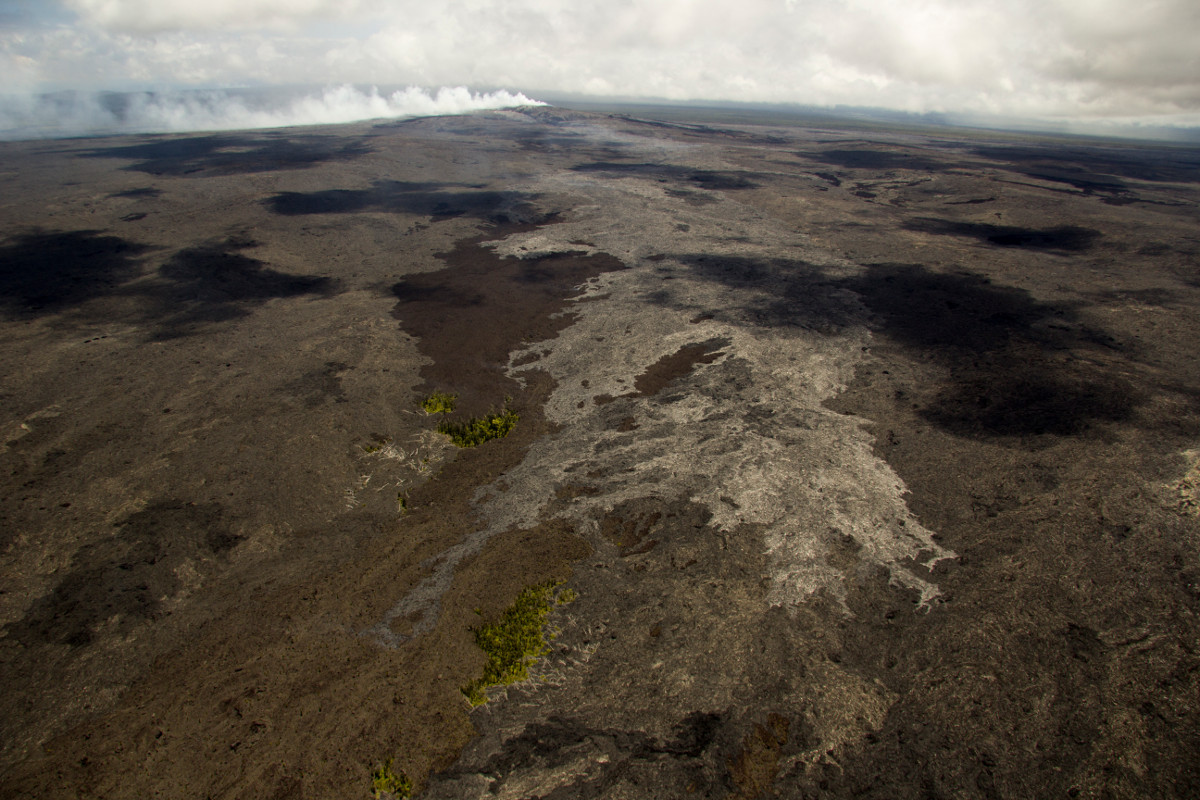
USGS Map: This small-scale map shows Kīlauea’s active East Rift Zone lava flow field in relation to the southeastern part of the Island of Hawaiʻi. The area of the active flow field on June 16 is shown in pink, while widening and advancement of the active flow field as mapped on June 23 is shown in red. The area covered by the inactive June 27th flow is shown in orange. The Puʻu ʻŌʻō lava flows erupted prior to June 27, 2014, are shown in gray.
HAWAII VOLCANOES NATIONAL PARK – The active “61g flow” southeast of Puʻu ʻŌʻō continues to advance and spread.
Between June 16 and 19, the USGS Hawaiian Volcano Observatory says the flow front advanced at a rate of roughly 330 feet per day and has moved about half a mile. As of yesterday, the flow front was roughly 330 feet from the northern boundary of the abandoned Royal Gardens subdivision, which means it could be in the subdivision within the day.
Mick Kalber filmed the lava flow from above aboard a Paradise Helicopter overflight. He says it appears the lava “will most likely begin to descend Pulama pali in the coming week.”
As of June 23, the flow was about 3.2 miles long. Scientists say no lava flows are threatening nearby communities.

In this USGS photo, the 61g flow is the lighter color area along the center of the image.

by Big Island Video News7:54 am
on at
STORY SUMMARY
KILAUEA (BIVN) - The lava flow is about to hit the cliff, and is now over 3.2 miles long and moving roughly 330 feet per day. Mick Kalber got some footage from above on Thursday.